3X10 (for Dóra Hegyi and Zsuzsa László)
I have received the request sent by e-mail – together with the list of potential participants – and I have tried to interpret it, since the condition of the cooperative assistance (and it is in this that I see the essence of the request) is that the one to whom the question is raised should understand the intention and aims of the one who asks, i.e., should realise in her/himself: what, how and why? The essential part, it seemed, was this sentence:
“Name ten events or exhibitions of key importance for you from the Hungarian art scene of the 1960s and 70s!”
This, however, was in contradiction with the section of the text below from the call entitled “Parallel Chronologies” from the collaborative project, entitled "Invisible History of Exhibitions":
Instead of aiming at an objective history gained from the synthesis or reconciliation of differing individual points of views we rather would like to trace the idiosyncratic pattern of difference and accordance, the map of blind-spots and legends. The specification “of key importance for you” namely cannot be here the equivalent of the “blindspots of reception”, if only the players (addressees) have not been considered from the outset as those having the blind-spots (I would not deem to assert this about the part of the list besides myself), nor can the rejection of an “objective event-history” be compatible with the essence of chronology, an auxiliary science to history. . In order to be more precise, I asked once again in an e-mail, what exactly would be my task, what exactly the initiators would like, and here I will quote two parts of the response I received:
“This is now the background research for the exhibition, with the aid of which we would like to structure and contextualise the documents of the Hungarian archival documents; in other words, we are not going to derive statistics from the responses, this is not a “best of”; moreover, we would like to highlight precisely such things that are not present even in the professional circles.” “…we are looking for approximately 10 events that occurred during the 1960s-70s, which you consider important for some reason, or you would like to propose for our attention.”
From the above, I finally understood that it is not a chronology that is being assembled here, but rather a context-map of the (art-)historical consciousness of the current actors of the art scene – chosen according to some viewpoint, and representative from the point of view of the initiators.
On this basis, I respond to the request – limited somewhat by the strictly defined timeframe at my disposal – with this memorandum entitled “3x10”, which the prospective reader currently reads.
Ten sentences on chronology
1. The essence of a chronology, as is expressed by its name, is to construct stories, in certain cases meaningful histories from a mass of events that stand in a coordinative relation to one another, without correspondences through selecting and arranging sensibly the temporal-data at one’s disposal.
2. If someone holds the content of previous sentences to be a mistaken statement since the science of chronology (in the words of Imre Szentpétery: kortan – the study of time – the translator) is a system of the historical examination of the measurement of time and timing, i.e., serves for the precise establishment of exactly when (and where) something happened, according to a currently interpretable chronological order, then one must admit that the person is right.
3. The use of chronology is precise (time-)measurement, which must fulfil the expectation which during the search for a relationship of “before” or “after” it would also like to weigh it up to the current, important fact; and this is why it is a historical science, since a thorough study of sources on multiple levels is necessary to derive the precise data: e.g., it is not enough to believe the data on a printed invitation card, but this must be compared for example to the diary entries of the individual who has taken part in the event, or in the worst case, to her/his memory.
4. A personal chronology does not mean a diary: it is typical to attempt to fix the parallel data of many, which often have a distant relation to each other, and if the life of the individual at hand holds a connection to the public in some way. Thus alongside the turning-points in the life of an artist, lists of works (the data for a future oeuvre-catalogue), exhibitions, publications and lists of sales (or viewed from the other side: inventory of acquisitions to a collection), reference lists (critics, reviews, awards), etc. are also present.
5. The map of mentioned and imaginable temporal series is a network that overlaps and intersects one another on various levels, where the given nodes become the base-points of a new, possible network, as potential meta-data, or in other words, potential chronological data.
6. If there were a camera in every artwork that would record who, when, where stood in front of it (saw it), this list would not have even a nodding acquaintance with the other list that would specify by whom, when, and where it was written about.
7. Every event that becomes an element of a chronology-attampt is already a happening through which there will be precedents and consequences – thus, the ideal events are those which all such lists of data neglect.
8. A chronology is organised around the rhythm of the year, month, day, hour and minute, whose construction today can be assisted by (mobile) telephone call-lists generated and recorded by computer, as well as the EXIF data that records space-time co-ordinates of digital photographs, of a precision unknown until now.
9. Exact time in the eternal present condition is no longer a question: it functions at the push of a button.
10. The current chronology is the temporal order of personal reception.
2. (3.) Imprecise and partially precise data for the “chronology”
This list (2/1-10) contains information that is publicized and annotated to various degrees, and is only partially verified; i.e., it is “unfinished”, but perhaps suitable as a response. Matching some date in the items of the previous list I selected international art data at random from the Wikipedia “List of years in art” pages (under development) (3/1-10). The latter I did not check at all.
2/1
The (History of) Fényes Adolf Hall. Kassák Lajos, self-financed, on his 80th birthday, (b. Érsekújvár [today Nové Zámky in Slovakia], 21 March 1887 – Budapest, 22 July 1967), in the year of his death could organise an exhibition of his constructivist picture architectures (3-24 March 1967. Arranged by: Agamemnon Makrisz http://hu.wikipedia.org/wiki/Makrisz_Agamemnon) (later, e.g., Kondor exhibition, Jovánovics – Nádler 1970 …) Bori Imre-Körner Éva: Kassák irodalma és festészete. (The Literature and Painting of Kassák) Budapest, 1967. http://www.artpool.hu/veletlen/naplo/0605c.html
3/1
Sol LeWitt publishes Paragraphs on Conceptual Art in Artforum. http://en.wikipedia.org/wiki/1967_in_art
2/2
15 March 1970, radio opening-action for the exhibition of György Jovánovics (and István Nádler) in Fényes Adolf Hall. See “14 April 1999. 18:30, Artpool P60: "ÉLETEM LEGJOBB MŰVE..." (my best work ever) lecture by György Jovánovics” http://www.artpool.hu/eventshu99.html and the environment following the ground plan of the Fényes Adolf Hall during its realization in the cellar-studio (1970) Orpheus, 1992/4/102-103
3/2
Prix Puvis de Chavannes - Daniel du Janerand. http://en.wikipedia.org/wiki/1970_in_art
2/3
1973 Gábor Bódy: Végtelen tükörcső (Infinite Mirror-tube) – lecture at the Congress on Semiotics in Tihany.
http://www.c3.hu/collection/videoművészet/body.html
3/3
Deaths/1973: 8 April - Pablo Picasso, Spanish painter, draughtsman, and sculptor (b.1881). http://en.wikipedia.org/wiki/1973_in_art
2/4
Tamás Szentjóby: Csinálj széket! (Make a Chair!), 1975, FMK, action photo (Photo: Éva Körner)
http://balkon.c3.hu/balkon_2000_06/f_szombathy_b_1.htm “Szentjóbynak 1975 decemberében kellett elhagynia Magyarországot.” (In December 1975, Szentjóby had to leave Hungary) = Vető János: A fény éjszakái. (Nights of Light) http://www.inaplo.hu/or/199921/04_veto.html
3/4
Mona Hatoum leaves her native Lebanon to study at the Byam Shaw School of Art in London. http://en.wikipedia.org/wiki/1975_in_art
2/5
“Schroeder halála” (Schroeder’s Death). Premiere of the piece by László Vidovszky, Új Zenei Stúdió (New Music Studio), Budapest, 1975. Published: Vidovszky László: Schroeder halála preparált zongorára (for prepared piano). Piano score, February, 1979. Published by: Editio Musica Budapest, ISMN: M080084236, 20 pp., and Edition Zeitklang 403282-400023. Also: Vidovszky László: Schroeder’s Death, Zoltán Kocsis – modified piano, the author; Zoltán Jeney ,László Sáry – preparation. Recorded: Budapest, Rottenbiller u. 47, 1985. 08. 10-11. http://www.kocsiszoltan.hu/info.asp?id=34 ) “Schroeder’s Death was played 54 times between 1975 and 95, from Genova to Stockholm, from Salgótarján to Toronto” http://www.epa.oszk.hu/00800/00835/00009/1796.html 2001 Salzburg: “At the end of the closing night, the performance of László Vidovszky’s piece Schroeder’s Death was drowned in scandal.” http://es.fullnet.hu/0135/salzburg.htm Author’s ref.: http://www.doktori.hu/index.php?menuid=192&sz_ID=6916
3/5
Salò o le 120 giornate di Sodoma (Salò or the 120 Days of Sodom) … 1975 film written and directed by Italian director Pier Paolo Pasolini. http://en.wikipedia.org/wiki/1975_in_film http://en.wikipedia.org/wiki/Sal%C3%B2_o_le_120_giornate_di_Sodoma
2/6
1977 Miklós Erdély: Screening of his film Álommásolatok (Dream Reconstructions) at the Kossuth Club in Budapest. Cinematography: Gábor Dobos http://www.lektoratus.hu/osztondijak/dobos05.html
3/6
Births/1977: March 6 - Bubba Sparxxx, rapper http://en.wikipedia.org/wiki/1977_in_music#Classical_music http://en.wikipedia.org/wiki/Bubba_Sparxxx
2/7
1977 Peter Weibel’s exhibition at the GM Gallery in Budapest (the gallery of the Ganz Mávag Cultural Centre that also hosted Erdély’s Creativity Exercises). Vernissage: László Beke: 14 pont a videóról. (14 Points on video) http://www.c3.hu/collection/videoművészet/beke.html
3/7
documenta 6 takes place. http://en.wikipedia.org/wiki/1977_in_art
2/8
Gyula Pauer: Táblaerdő (Forest of Signs), 20 October 1978. “Pauer set up his forest of demonstration-signs, entitled “Forest of Signs” (…) at the Nagyatád art colony with the aid of Zoltán Érmezei and the members of a brigade. Approximately half an hour after the completion of installing the signs, members of the local police smeared mud over the captions of the signs. Later, the employees of the art colony sawed the handles of the signs embedded in concrete at their base, and after marking the stumps, heaped the signs in a shed. Subsequently, the expert commission arriving on the scene nullified the artistic value of Pauer’s work.” http://www.artpool.hu/Al/al08/tuntetotabla/Szoke.html http://www.pauergyula.hu/képzoművészeti/nagyatad/tuntetotabla.html SASVÁRI EDIT: „ÉLJEN A TÜNTETŐTÁBLA-ERDŐ” (Long live the Forest of Demonstration Signs!) http://www.pauergyula.hu/bibliografia/konyvpdf/06-Pauer-Nagyatad%20II%20.pdf http://www.nagyatadiszoborpark.hu/index.php?option=com_content&task=view&id=16&Itemid=44
3/8
Gehry House by Frank Gehry in Santa Monica, California. http://en.wikipedia.org/wiki/1978_in_architecture http://en.wikipedia.org/wiki/Gehry_House
2/9
Xertox – Diligent meditation, from 1982
“9-(30) May 1982 - Pesterzsébet Museum, Budapest, "EMBERKÍSÉRLETEK" (Human Experiments), international mail art exhibition (XERTOX 3rd diligent meditation) – banned, despite the jury. 17 September – October 1982. Hungarian National Gallery (MNG), Budapest, in the "Atelier series"
Exhibition of Róbert Swierkiewicz entitled "Atelier-test" (XERTOX 7th diligent meditation)
19 October – 1 November 1982. Bercsényi 28-30 Club, Budapest, "Human Experiments" international mail art exhibition organised by Xertox. (The material of the banned Pesterzsébet Museum.) Opening event: Xertox group’s 8th diligent meditation and György Galántai’s documentary-sound work, "Scandal Art" 11 November 1982. Újpest Mini Gallery, Budapest, "ELDORADO" mail art exhibition, organiser: István Szirányi, vernissage: Tibor Kulcsár’s musical action, live presentation by Péter Sarkadi, Ernő Tolvaly’s acoustic experiment, Xertox 9th diligent meditation (d.m. 9), selection from the Artpool sound archives http://www.artpool.hu/kontextus/kronologia/1982.html http://artportal.hu/lexikon/művészeti_iranyzatok/xertox_csoport http://exindex.hu/index.php?l=hu&page=3&id=275
3/9
Andy Warhol "falls in love" with Duran Duran at a Blondie concert. http://en.wikipedia.org/wiki/1982_in_art
2/10
Dóra Maurer: Projekt Buchberg / Spatial Painting Buchberg Project (1982-83), Vernissage: Buchberg am Kamp (on view, even today), the film was premiered in 1983. (BBS) – MDL (Maurer inventory): 191. ill 192.
3/10
Nobel Prize for Literature: William Golding http://en.wikipedia.org/wiki/1983_in_literature
Budapest, 21-27 March 2009

 tranzit is a contemporary art program supported by the Erste Bank Group
tranzit is a contemporary art program supported by the Erste Bank Group

 The exhibition Parallel Chronologies and the symposium The Invisible
History of Exhibitions is part of the international project Art Always Has
Its Consequences co-financed by the Culture 2007 program of the European
Union (partners: WHW Zagreb, tranzit. hu, Muzeum Sztuki Łódź, kuda.org
Novi Sad).
The exhibition Parallel Chronologies and the symposium The Invisible
History of Exhibitions is part of the international project Art Always Has
Its Consequences co-financed by the Culture 2007 program of the European
Union (partners: WHW Zagreb, tranzit. hu, Muzeum Sztuki Łódź, kuda.org
Novi Sad).



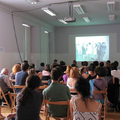
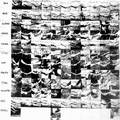
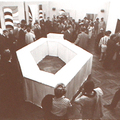
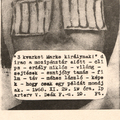
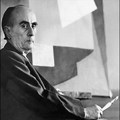
Utolsó kommentek